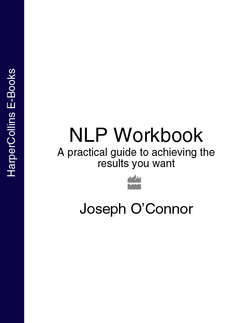Читать книгу NLP Workbook: A practical guide to achieving the results you want - Joseph O’Connor - Страница 37
Internal Attention
ОглавлениеWhat are you aware of in your body?
Often we try to blank out signals that we do not like instead of paying attention to them. When you pay attention, you will be able to understand and appreciate yourself on a deeper level. This is part of pacing yourself – simply being aware of your thoughts, feelings, emotions and states without necessarily trying to change them. The more we become aware of our internal world, the more we will appreciate who we are and come to know ourselves.
Systematic internal awareness is called ‘taking a personal inventory’.
| TAKING A PERSONAL INVENTORY |
Sit quietly for a few moments and become aware of your body.
What are you mostly aware of?
What feelings do you have in your body?
Start at your feet and let your awareness move up your body.
Feel the connection between all the parts of the body.
Which parts feel at ease and which parts feel uncomfortable?
Do not try to change anything, just notice, without judging.
What thoughts do you have?
Look at your mental pictures, if you have any at the moment.
What are the qualities of these pictures? Do they move quickly or slowly or are they still?
Whereabouts in your visual field are they located?
How far away do they seem to be?
What sounds do you hear in your mind?
Are you talking to yourself?
What sort of voice quality does this have?
Are there any other sounds?
Where do they seem to be coming from?
How is your sense of balance?
Do you feel as though you are leaning too far to one side or too far backwards or forwards?
What emotional state are you in?
What is your predominant emotion?
Be aware of it without trying to change anything.
Come back to the present moment.
An inventory does not try to change anything, only to pay attention internally.
| REPRESENTATIONAL SYSTEMS |
Just as we see, hear, taste, touch and smell the outside world, so we recreate those same sensations in our mind, re-presenting the world to ourselves using our senses inwardly. We may either remember real past experiences or imagine possible (or impossible) future experience. You can picture yourself running for a bus (remembered visual image) or running down the canals of Mars wearing a Father Christmas outfit (constructed visual image). The first will have happened. The second will not, but you can represent both.
We use our representational systems in everything we do – memory, planning, fantasizing and problem solving. The main systems are as follows.
